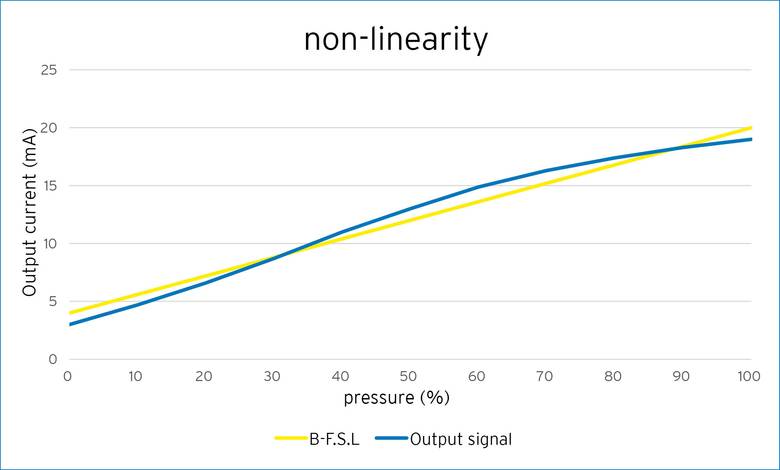In measurement technology, accuracy is a central issue. The more accurately a process can be controlled, the higher the quality of the overall solution, which is then usually reflected in the achievable sales price.
Little by little, we will publish more articles on our homepage about the exact error consideration of pressure transmitters. Our first topic is non-linearity:
Piezoresistive pressure sensors are semiconductor sensors, which means, among other things, that they are not as linear as a strain gauge, for example. On the other hand, piezoresistive pressure sensors are much more sensitive and can also measure very small pressure ranges in the Pascal range.
The blue curve shows the typical course of an output signal as a function of the applied pressure. If a straight line (here yellow) is placed in the curve, whose maximum deviation from the curve is the same on both sides, this is called a best-fit straight line. In English, this is abbreviated to B.F.S.L. The usual nonlinearities of piezoresistive pressure sensors are very small, e.g. 0.25 % B.F.S.L. related to the full scale value. This nonlinearity is compensated by common ASIC signal conditioning and thereby no longer contributes significantly to the overall accuracy of the pressure transmitter.
